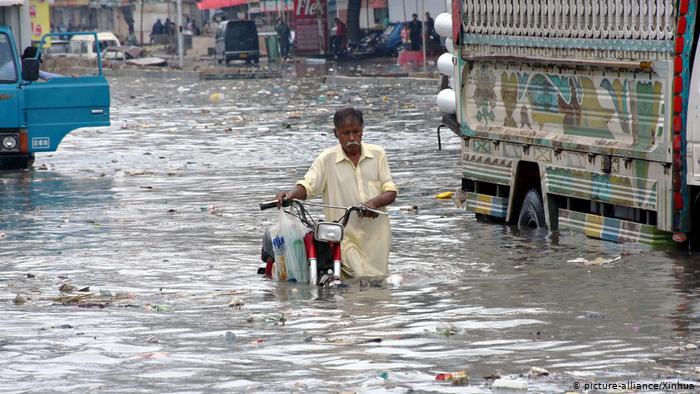The current state of the world is not what people envisioned 2020 to be. A failure to properly manage coronavirus has led to it continuing to ravage the world, even coming back as a second wave in some countries. Protests have broken out in the United States advocating for black rights and against police brutality, yet instead of listening, the government is attacking protestors. With elections gearing up worldwide, corruption scandals, like in Belarus, and divisive politics dominate news channels. Now, these are all man-made dilemmas. The most deadly problem is an overlooked one: climate change.
With the overwhelming load of problems plaguing the world, the fight against global warming has been put on hold. Now while advocacy and protests may have stopped, destructive natural disasters continue.
For instance, monsoon season affects South Asia every year. It leads to flooded streets, some destroyed crops, and humid weather. This year, however, it brought a flood more deadly than usual. On August 29, Pakistan was hit with flooding reaching six to seven feet. People were forced to vacate their flooded homes, leaving them homeless. Some died from being swept away with the floodwater, while others died of electrocution from fallen power lines. The flooding was so powerful that a bridge in Sialkot even split in half.
Just from the monsoon season alone thus far, which lasts from June to September, 136 Pakistanis have died.
Now, one might say that flooding is common to Pakistan, and that the recent one is nothing special. Actually, it is, since it follows the trend that as the earth continues to warm up, the intensity of storms will as well. As carbon dioxide is emitted into the air, like during big corporation’s productions, it eats away at the ozone layer allowing more sunlight to pass through. Hence, the world heats up and this leads to more water vapor. That vapor then manifests itself as storms. The flooding in Pakistan is not the only example of this phenomenon.
In the past weeks, Louisiana, U.S. was struck with the worst hurricane in its state history. Hurricane Laura, a category four hurricane, came with intense rainfall and gusting winds that left many homes destroyed and streets blocked by fallen tree branches and power lines. Citizens were advised to go stay in hotels instead of shelters due to proximity leading to coronavirus concerns.
On top of education and health concerns, on top of a high unemployment rate worldwide and hurt economies, on top of necessary resources not being properly allocated, people now have to be concerned for the predicted increase in hurricanes this season. “Looking back at 170 years of data, this Atlantic hurricane season could end up rivaling the most severe on record — namely 2005 — which contained the infamous and tragic Hurricane Katrina (damages of 1.2% of 2005 GDP),”Jim Reid, an economist at Deutsche Bank wrote. “2005 saw 28 named storms with no other year exceeding 20. This was the only year the alphabet was exhausted and we moved to the Greek equivalent. We only need 21 for this as Q, U, X, Y and Z are not used,” according to Market Watch.
Hurricane Katrina devastated Louisiana in 2005, and left damage that cost the United States $125 billion. Then twelve years later, Hurricane Harvey came and was so destructive in Texas and Louisiana that it actually tied Hurricane Katrina. With such a large gap, it would appear that Hurricane Harvey were an anomaly. Except it wasn’t. That same year, Hurricane Maria came to Puerto Rico as yet another Category 5 hurricane. 2018 revealed a total of eight hurricanes, including the destructive Hurricane Florence and Hurricane Michael. Even 2019 had its own share of hurricanes, with the Bahamas’ Hurricane Dorian being a Category 5 hurricane as well.
Clearly, there is a pattern. Though hurricane season is common to areas of the world located closer to the open sea, the actual hurricanes have become rapidly more intense. Thus. As the years go on, tropical storms and hurricanes are becoming more powerful, corroborating scientists’ predictions.
Contrary to those who openly believe climate change isn’t real, the increase in water intensity both in hurricanes and floods can only be attributed to the world heating up. This isn’t just happening in Pakistan, Puerto Rico and the United States. As governments and corporations don’t take measures to take climate change seriously, the water related deaths and destructions will only get worse.
